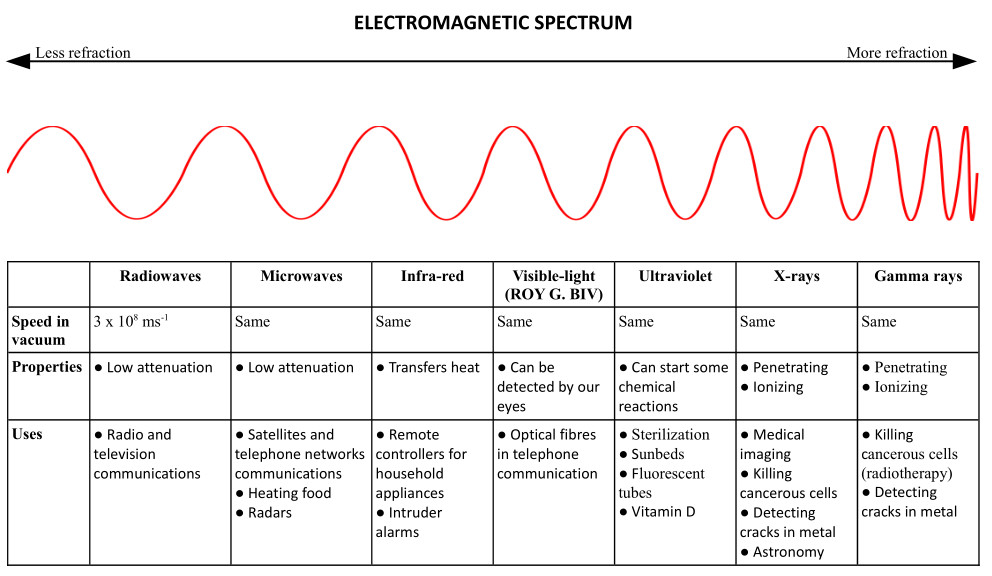-
Wave motion
-
It is the transfer of energy
-
without (net) transfer of material medium
-
-
Types of waves
-
Transverse waves: These are waves in which the direction of wave-motion is perpendicular to the direction of vibration of source.
-
Examples: Rope waves, all kinds of electromagnetic radiations, water waves, etc.
-
-
longitudinal waves: These are waves in which the direction of wave-motion is parallel to the direction of vibration of source.
-
Examples: Sound waves, compressions and rarefactions in a slinky spring, etc.
-
-
-
Some terminologies related to the study of wave-motion are:
-
Crests: They are the high points. For longitudinal waves the term compressions is used.
-
Troughs: They are the low points. For longitudinal waves the term rarefactions is used.
-
Amplitude (A): It is the MAXIMUM displacement from the central position.
-
Wavelength (λ): It is the displacement between two neighbouring crests.
-
Frequency (f): It is the number of waves per unit time.
-
Unit: Hz
-
-
Period (T): It is the time taken to produce one complete wave.
-
Wavefront: It is the imaginary line on a wave that joins all the crests. Wavefronts can be
-
circular wavefronts
-
plane wavefronts
-
-
-
Formulae / Relationships
f = 1 / T
v = f λ
-
A ripple tank can help us study waves including
-
reflection
-
refraction
-
Remember “SSS” – Shallower Shorter Slower.
-
Frequency of a wave cannot change because it depends on source.
-
-
-
Electromagnetic spectrum
-
Different range of wavelength have been given different names, e.g., radio waves, infrared, etc.
-
They are all transverse waves.
-
They travel at 3,00,000,000 m/s in vacuum.
-
They slow down in other mediums.
-
They carry no charge.
-
-
Fluorescence: It is the visible light emitted during absorption of Ultraviolet, X-rays or Gamma rays.

Go back to table of contents



